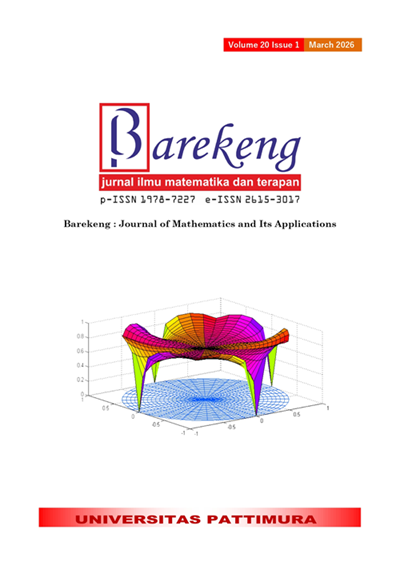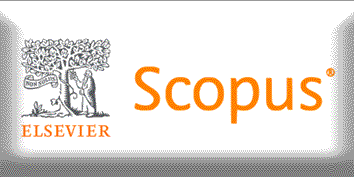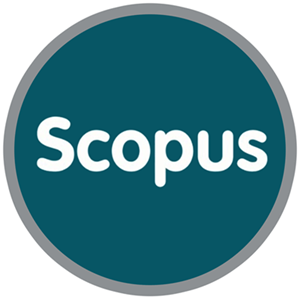ESTIMATING MODULARITY BOUNDS FOR HOMOPHILIC SCALE-FREE NETWORKS
Abstract
The problem of estimating the modularity boundaries for networks that are both homophilic and scale-free is considered. The key property of homophilic networks is the tendency of nodes to link with similar nodes, i.e., belonging to the same community. Thus, homophily is a natural mechanism for community formation, i.e., network structuring. One of the measures of network structuring is modularity. In homophilic networks, not only can the distribution of node degrees be scale-free, but also the distribution of community sizes. In this case, communities can differ significantly in size, which leads to narrowing the achievable modularity boundaries. Estimates of the modularity boundaries of networks of the considered class are obtained. Mathematically strict estimates contain non-elementary functions, which complicates the practical application of such estimates. Approximate estimates with high (0.005) accuracy for the most characteristic values of network parameters are obtained.
Downloads
References
M. Girvan and M. E. J. Newman, “COMMUNITY STRUCTURE IN SOCIAL AND BIOLOGICAL NETWORKS,” Proceedings of the National Academy of Sciences, vol. 99, no. 12, pp. 7821–7826, Jun. 2002. doi: https://doi.org/10.1073/pnas.122653799
V. D. Blondel, J.-L. Guillaume, R. Lambiotte, and E. Lefebvre, “FAST UNFOLDING OF COMMUNITIES IN LARGE NETWORKS,” Journal of Statistical Mechanics: Theory and Experiment, vol. 2008, no. 10, p. P10008, 2008. doi: https://doi.org/10.1088/1742-5468/2008/10/P10008.
A. Li, J. Li, and Y. Pan, “HOMOPHYLY NETWORKS -- A STRUCTURAL THEORY OF NETWORKS,” Oct. 2013, [Online]. Available: http://arxiv.org/abs/1310.8295
A. Li, J. Li, and Y. Pan, “COMMUNITY STRUCTURES ARE DEFINABLE IN NETWORKS, AND UNIVERSAL IN REAL WORLD,” Oct. 2013, [Online]. Available: http://arxiv.org/abs/1310.8294
V. Boucher, “STRUCTURAL HOMOPHILY,” Int Econ Rev (Philadelphia), vol. 56, no. 1, pp. 235–264, Feb. 2015. doi: https://doi.org/10.1111/iere.12101.
A. Mele, “A STRUCTURAL MODEL OF DENSE NETWORK FORMATION,” Econometrica, vol. 85, no. 3, pp. 825–850, May 2017. doi: https://doi.org/10.3982/ECTA10400.
A. Mele, “A STRUCTURAL MODEL OF HOMOPHILY AND CLUSTERING IN SOCIAL NETWORKS,” Journal of Business & Economic Statistics, vol. 40, no. 3, pp. 1377–1389, Jun. 2022. doi: https://doi.org/10.1080/07350015.2021.1930013.
M. E. J. Newman, “POWER LAWS, PARETO DISTRIBUTIONS AND ZIPF’S LAW,” Contemp Phys, vol. 46, no. 5, pp. 323–351, Sep. 2005. doi: https://doi.org/10.1080/0010751050005244.
R. Shang, W. Zhang, L. Jiao, R. Stolkin, and Y. Xue, “A COMMUNITY INTEGRATION STRATEGY BASED ON AN IMPROVED MODULARITY DENSITY INCREMENT FOR LARGE-SCALE NETWORKS,” Physica A: Statistical Mechanics and its Applications, vol. 469, pp. 471–485, 2017. doi: https://doi.org/10.1016/j.physa.2016.11.066.
Y. Hu, S. Ji, Y. Jin, L. Feng, H. E. Stanley, and S. Havlin, “LOCAL STRUCTURE CAN IDENTIFY AND QUANTIFY INFLUENTIAL GLOBAL SPREADERS IN LARGE-SCALE SOCIAL NETWORKS,” Proceedings of the National Academy of Sciences, vol. 115, no. 29, pp. 7468–7472, Jul. 2018. doi: https://doi.org/10.1073/pnas.1710547115.
S. Chattopadhyay and C. A. Murthy, “GENERATION OF POWER-LAW NETWORKS BY EMPLOYING VARIOUS ATTACHMENT SCHEMES: STRUCTURAL PROPERTIES EMULATING REAL WORLD NETWORKS,” Inf Sci (N Y), vol. 397–398, pp. 219–242, 2017. doi: https://doi.org/10.1016/j.ins.2017.02.057.
D. Hevey, “NETWORK ANALYSIS: A BRIEF OVERVIEW AND TUTORIAL,” Health Psychol Behav Med, vol. 6, no. 1, pp. 301–328, Jan. 2018. doi: https://doi.org/10.1080/21642850.2018.1521283.
V. Shergin, L. Chala, S. Udovenko, and M. Pogurskaya, “ELASTIC SCALE-FREE NETWORKS MODEL BASED ON THE MEDIATON-DRIVEN ATTACHMENT RULE,” in 2020 IEEE Third International Conference on Data Stream Mining & Processing (DSMP), 2020, pp. 291–295. doi: https://doi.org/10.1109/DSMP47368.2020.9204207.
R. Albert and A.-L. Barabási, “STATISTICAL MECHANICS OF COMPLEX NETWORKS,” Rev Mod Phys, vol. 74, no. 1, pp. 47–97, Jan. 2002. doi: https://doi.org/10.1103/RevModPhys.74.47.
S. N. Dorogovtsev, J. F. F. Mendes, and A. N. Samukhin, “STRUCTURE OF GROWING NETWORKS WITH PREFERENTIAL LINKING,” Phys Rev Lett, vol. 85, no. 21, pp. 4633–4636, Nov. 2000. doi https://doi.org/10.1103/PhysRevLett.85.4633.
F. Di Lauro and L. Ferretti, “PREFERENTIAL ATTACHMENT AND POWER-LAW DEGREE DISTRIBUTIONS IN HETEROGENEOUS MULTILAYER HYPERGRAPHS,” May 2025, [Online]. Available: http://arxiv.org/abs/2505.18068
S. Rosengren, “A MULTI-TYPE PREFERENTIAL ATTACHMENT TREE,” Sep. 2018, [Online]. Available: http://arxiv.org/abs/1704.03256. doi: https://doi.org/10.24166/im.05.2018
F. Ma and P. Wang, “GROWTH SCALE-FREE NETWORKS BY VARIOUS GENERATIVE WAYS,” ACM Trans. Knowl. Discov. Data, Jul. 2025. doi: https://doi.org/10.1145/3748512.
F. Battiston, V. Nicosia, and V. Latora, “THE NEW CHALLENGES OF MULTIPLEX NETWORKS: MEASURES AND MODELS,” European Physical Journal: Special Topics, vol. 226, no. 3, pp. 401–416, Feb. 2017. doi: https://doi.org/10.1140/epjst/e2016-60274-8.
V. Shergin, S. Grinyov, L. Chala, and S. Udovenko, “CREATION OF THE GENERATIVE MODEL OF A SCALE-FREE NETWORK WITH HOMOPHILIC STRUCTURE,” Eastern-European Journal of Enterprise Technologies, vol. 2, no. 4 (134), pp. 14–22, Apr. 2025. doi: https://doi.org/10.15587/1729-4061.2025.326092.
A. Backhausz and B. Rozner, “ASYMPTOTIC DEGREE DISTRIBUTION IN PREFERENTIAL ATTACHMENT GRAPH MODELS WITH MULTIPLE TYPE EDGES,” Stoch Model, vol. 35, no. 4, pp. 496–522, Oct. 2019. doi: https://doi.org/10.1080/15326349.2019.1624574.
H. A. SIMON, “ON A CLASS OF SKEW DISTRIBUTION FUNCTIONS,” Biometrika, vol. 42, no. 3–4, pp. 425–440, Dec. 1955. doi: https://doi.org/10.1093/biomet/42.3-4.425.
R. Kasprzyk, “MATHEMATICAL MODELS OF INFORMATION OPERATIONS,” Procedia Manuf, vol. 44, pp. 663–670, 2020. doi: https://doi.org/10.1016/j.promfg.2020.02.242.
Z. Guo, Y. Yuan, R. Miao, J.-L. Guo, and J. Forrest, “EMERGENCE OF BENDING POWER LAW IN HIGHER-ORDER NETWORKS,” Jul. 2023, [Online]. Available: http://arxiv.org/abs/2305.11907
K. B. E. Oliveira and P. M. Rodriguez, “LIMIT THEOREMS FOR A STOCHASTIC MODEL OF ADOPTION AND ABANDONMENT INNOVATION ON HOMOGENEOUSLY MIXING POPULATIONS,” Journal of Statistical Mechanics: Theory and Experiment, vol. 2020, no. 3, p. 033404, 2020. doi: https://doi.org/10.1088/1742-5468/ab780c.
Q. Zhang, Y. Xue, D. Wang, and M. Niu, “ASYMPTOTIC FORMULA ON AVERAGE PATH LENGTH IN A HIERARCHICAL SCALE-FREE NETWORK WITH FRACTAL STRUCTURE,” Chaos Solitons Fractals, vol. 122, pp. 196–201, 2019. doi: https://doi.org/10.1016/j.chaos.2019.03.021.
V. Shergin, S. Grinyov, L. Chala, and S. Udovenko, “NETWORK COMMUNITY DETECTION USING MODIFIED MODULARITY CRITERION,” Eastern-European Journal of Enterprise Technologies, vol. 6, no. 4 (132), pp. 6–13, Dec. 2024. doi: https://doi.org/10.15587/1729-4061.2024.318452.
A. Lancichinetti and S. Fortunato, “LIMITS OF MODULARITY MAXIMIZATION IN COMMUNITY DETECTION,” Phys Rev E, vol. 84, no. 6, p. 66122, Dec. 2011. doi: https://doi.org/10.1103/PhysRevE.84.066122.
J. Reichardt and S. Bornholdt, “PARTITIONING AND MODULARITY OF GRAPHS WITH ARBITRARY DEGREE DISTRIBUTION,” Phys Rev E, vol. 76, no. 1, p. 15102, Jul. 2007. doi: https://doi.org/10.1103/PhysRevE.76.015102.
E. Abbe and C. Sandon, “COMMUNITY DETECTION IN GENERAL STOCHASTIC BLOCK MODELS: FUNDAMENTAL LIMITS AND EFFICIENT RECOVERY ALGORITHMS,” Mar. 2015, [Online]. Available: http://arxiv.org/abs/1503.00609. doi: https://doi.org/10.1109/FOCS.2015.47
S. Jarukasemratana, T. Murata, and X. Liu, “COMMUNITY DETECTION ALGORITHM BASED ON CENTRALITY AND NODE CLOSENESS IN SCALE-FREE NETWORKS,” Transactions of the Japanese Society for Artificial Intelligence, vol. 29, no. 2, pp. 234–244, 2014. doi: https://doi.org/10.1527/tjsai.29.234.
J. Jin, Z. T. Ke, S. Luo, and M. Wang, “OPTIMAL ESTIMATION OF THE NUMBER OF COMMUNITIES,” Sep. 2020, [Online]. Available: http://arxiv.org/abs/2009.09177
Copyright (c) 2025 Vadim Shergin, Serhii Udovenko, Tetiana Miroshnychenko, Larysa Chala, Oleksandr Dorokhov

This work is licensed under a Creative Commons Attribution-ShareAlike 4.0 International License.
Authors who publish with this Journal agree to the following terms:
- Author retain copyright and grant the journal right of first publication with the work simultaneously licensed under a creative commons attribution license that allow others to share the work within an acknowledgement of the work’s authorship and initial publication of this journal.
- Authors are able to enter into separate, additional contractual arrangement for the non-exclusive distribution of the journal’s published version of the work (e.g. acknowledgement of its initial publication in this journal).
- Authors are permitted and encouraged to post their work online (e.g. in institutional repositories or on their websites) prior to and during the submission process, as it can lead to productive exchanges, as well as earlier and greater citation of published works.






1.gif)



